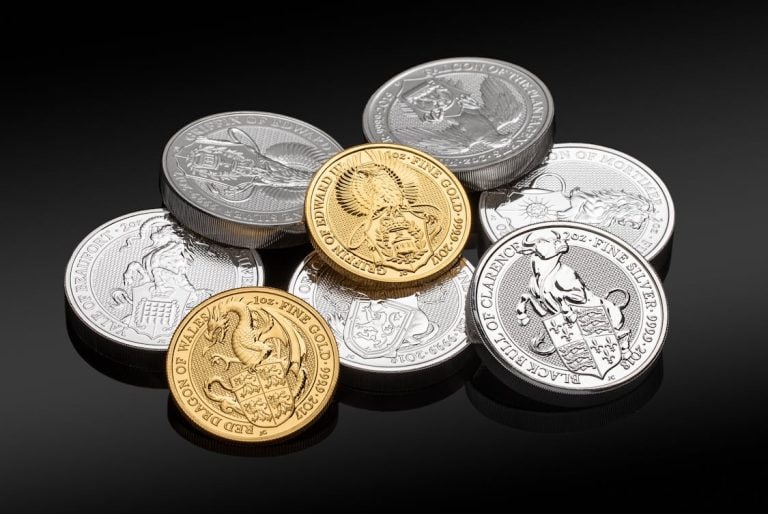Investing in silver can be an intriguing option for those looking to diversify their portfolios. With a history of value retention, it’s essential to scrutinize various factors before making the leap. Let’s explore how to determine if silver aligns with your investment strategy. Understanding Silver as an Investment Silver has long been recognized as a …
How to Know If Silver Is Right for Your Investment Plan

Investing in silver can be an intriguing option for those looking to diversify their portfolios. With a history of value retention, it’s essential to scrutinize various factors before making the leap. Let’s explore how to determine if silver aligns with your investment strategy.
Understanding Silver as an Investment
Silver has long been recognized as a precious metal and a hedge against inflation. The historical context reveals that people have treasured silver not just for its beauty but also for its intrinsic value.
Unlike some assets, silver has industrial applications that can influence its market price. This duality makes it a unique contender in the investment arena.
Evaluating Your Financial Goals
Before jumping into any investment, it’s vital to clarify your financial goals. Ask yourself: Are you seeking short-term gains, or are you thinking long-term?
Silver can fluctuate significantly, and understanding your risk tolerance is key. If you prefer stability and modest returns, you might want to think twice about investing a large chunk in silver.
Market Analysis: Trends and Historical Data
Keeping an eye on market trends can provide valuable insights. Look at the historical performance of silver. Has it held its value over time? Consider charts that show price movements. Analyzing these can help you identify patterns.
For real-time charts and trusted market analysis, many investors turn to resources like money metals exchange to guide their silver decisions. It’s also wise to follow news related to the global economy, as this can impact precious metals significantly.
Industrial Demand and Supply Dynamics

Silver isn’t just a shiny metal; it’s heavily used in industries such as electronics, solar energy, and healthcare. Understanding the demand dynamics can inform your investment decisions.
When industrial demand rises, so may silver prices. Conversely, consider how supply issues can lead to price spikes or drops. A well-informed investor keeps tabs on these factors.
Storage and Security Considerations
Investing in physical silver requires thinking about storage and security. Will you keep your silver at home, or will you use a vault? Each option presents its own set of risks and costs.
Consider insurance as part of your storage strategy. Losing physical assets can be a significant blow to your investment portfolio.
The Role of Silver in Diversification
In the realm of investing, diversification is often hailed as a golden rule. Silver can serve as an excellent diversifier within a portfolio. By adding silver to your investments, you may reduce overall risk.
This is especially true if your other assets are predominantly in stocks or bonds. Diversification can help cushion against market volatility.
Comparing Silver to Other Precious Metals
When contemplating silver, it’s useful to compare it to gold and platinum. Each metal has unique characteristics and market dynamics.
Gold tends to be viewed as a safer haven, while silver offers higher volatility and potential for greater short-term gains. Knowing how silver stacks up against these alternatives can clarify your investment choices.
Economic Indicators to Watch
Several economic indicators signal when it might be wise to invest in silver. Pay attention to inflation rates, interest rates, and geopolitical tensions.
High inflation often leads investors to precious metals as a safe harbor. Likewise, when interest rates are low, silver might attract more buyers. Recognizing these indicators can help you make timely decisions.
Investment Vehicles: Physical vs. ETFs
When investing in silver, you have options. You can buy physical silver in the form of coins or bars, or you can choose exchange-traded funds (ETFs).
Each has its own set of pros and cons. Physical silver offers tangible value, while ETFs provide liquidity and ease of trading. Understand your preferences before making a choice.
Costs and Fees Involved
Investing in silver isn’t free of costs. There are premiums over spot prices, storage fees, and transaction costs to consider. Make sure to account for these when calculating your potential returns. Being clear about the costs will help you avoid unpleasant surprises down the road.
Behavioral Aspects of Investing
Investing isn’t just about numbers; psychology plays a vital role. Fear and greed can sway decisions. When silver prices soar, the temptation to jump in can be overwhelming.
Conversely, when prices drop, panic may lead to hasty decisions. Recognizing your emotional triggers can help maintain a clear-headed approach.
Timing Your Investment
Timing can be everything in the investment world. Some investors believe in buying on dips, while others prefer dollar-cost averaging.
This strategy involves investing a fixed amount regularly, regardless of price. This approach can help mitigate the impact of volatility, allowing you to participate in the market over time.
Tax Implications of Silver Investments
Don’t overlook the tax considerations that come with investing in silver. Different jurisdictions may tax precious metals differently.
Understanding possible capital gains taxes can help you plan your investments more effectively. It’s wise to consult with a tax advisor to navigate these complexities.
Evaluating Your Investment Horizon
How long do you plan to hold silver? Your investment horizon can significantly influence your strategy.
If you’re eyeing short-term gains, your approach will differ from a long-term holder. Short-term traders might focus more on price movements, while long-term investors could prioritize overall value retention.
Seeking Professional Guidance
If uncertain, consulting with a financial advisor can provide tailored advice. Advisors can help you evaluate your current portfolio and how silver might fit into your overall strategy. They can also assist with risk assessment and align your investments with your financial goals.
Community and Networking for Insights
Engaging with communities interested in silver investment can provide fresh perspectives. Online forums and local investment clubs often share valuable insights and tips. Networking with like-minded individuals can help you stay informed about market trends and developments.
Personal Risk Tolerance
Understanding your own risk tolerance is essential when investing in silver. Are you comfortable with potential volatility, or do you prefer steady, albeit lower, returns? Knowing your limits will help you make decisions that align with your comfort level.
Currency and Global Impact
Silver prices can be influenced by currency fluctuations. Be aware of how changes in the US dollar or other major currencies can affect your investment. A strong dollar can make silver more expensive in other currencies, impacting demand.
The Influence of Geopolitical Events
Geopolitical events can lead to uncertainty, prompting investors to flock to precious metals like silver. Keep an eye on global events that may shift market dynamics. Understanding these factors can help you anticipate price movements and make more informed decisions.
Assessing Your Current Investments
Before adding silver to your portfolio, evaluate your current investments. How does silver fit into your existing asset mix? Does it complement your other holdings? A well-rounded investment strategy should consider the complete picture of your financial landscape.
Long-Term vs. Short-Term Perspectives
Silver can play different roles depending on your investment perspective. Long-term investors might prioritize value retention, while short-term traders focus on market timing. Clarifying your objectives can help you approach your silver investment with clarity.
Staying Updated with Market News
Keeping abreast of the latest news and trends can provide significant advantages. Follow reputable financial news sources to stay informed about factors affecting silver prices. This knowledge can equip you to make proactive investment decisions.
Making the Final Decision
Ultimately, whether silver is a good fit for your investment plan boils down to your unique financial situation and goals. Assess the factors outlined above, and take your time to weigh your options. A thoughtful approach can lead to better investment outcomes.









